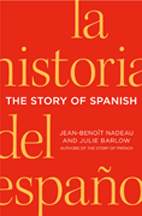By Jean-Benoît Nadeau & Julie Barlow
On March 21st Mexicans celebrate the birthday of Benito Juárez. Nowadays, his picture is usually found next to the Virgin’s in family shrines in Mexico.
President of Mexico from 1858 to 1872, Juárez was a liberal and the first head of state who managed to create some sort of stability in the country during a very agitated century.
However, this is not the primary reason why the president is revered.
Benito Júarez was the first Native American to rise to the pinnacle of power since Moctezuma, and the first to do so in the Western hemisphere since the arrival of Columbus. This is undoubtedly significant in a country that was – and remains – predominantly native and mestizo.
The Zapotec Indian-born Juárez was orphaned at age three and did not speak Spanish until he was twelve. He surmounted impossible odds to become Mexico’s president, like working as a domestic servant to pay his way through law school and climbing his way up Mexico’s social ladder.
Since the 19th century, Latin American and Caribbean history has been dominated by almost continual strife between European criollos and disenfranchised mestizos, mulattos and natives, who fought for their rights and for recognition. Benito Juárez was a groundbreaker.
Unfortunately, while he did create some stability, he did not find the exact formula. It took the Mexican Revolution of 1910–1920, and 900,000 deaths until the Mexican government found a solution to their chronic instability.
But the Mexican Revolution sparked a new Mexican identity that would turn Juárez into a veritable cult figure. While Argentines were following the French’s fine arts tradition and other European vogues, Mexicans embraced the mystical exaltation of the Indian peasant and the mestizo urban proletariat. In the process, Mexico began generating completely unique and original works in the visual arts (like mural art) and in cinema.
This cultural development resulting from the Mexican Revolution helped spread the exultation of the “mestizo” identity even further. In the 1920s, the government began investing immensely in libraries, theaters, museums and radio programs. It put in place a vast education system with the hope of creating a single Mexican identity out of Mexico’s mixed population of criollos, Indios and mestizos.
Mexican official culture shifted abruptly from hispanidad (Hispanicity) to americanismo. In the 1920s, Mexico established itself as the most representative Spanish American republic, a home of cultural nationalism and latinoamericanismo.
Only the Spanish Civil War and Cuban Revolution can compare with the impact of the Mexican Revolution on Hispanic art, culture and thought since the 1920s.
The intellectual figure who captured the essence of this shift was José Vasconcelos (1882–1959), rector of the National University in 1919 and minister of education in 1921. As a statesman, Vasconcelos was responsible for creating the Mexican education system and establishing its public libraries – he is the one who first commissioned Diego Rivera’s giant murals.
Vasconcelos expressed his strong americanista point of view in his major work, La Raza Cósmica (The Cosmic Race), published in 1925. Contrary to what the title suggests, Vasconcelos’ work was not science fiction; it was the cornerstone of indigenismo (the celebration of ancient indigenous cultural heritage). In his introduction, Vasconcelos writes: “We will come, in the Americas before anywhere else in the world, to the creation of a race made from the treasures of all of those before, a final race, a cosmic race.”
Vasconcelos’ wrote La Raza Cósmica to give the oppressed (the mestizo and the Indians) reasons to be proud. In his essay, he also expressed the ideology of universally progressing as a “fifth race” despite factors of race, territory and spirituality.
In other words, Vasconcelos pushed the mystical adulation of the mestizo identity to its extreme, and Benito Juárez – retroactively — became its embodiment.
 More information about the development of Spanish in Latin America can be found in our new book, The Story of Spanish, to be released in May 2013, St. Martin’s Press.
More information about the development of Spanish in Latin America can be found in our new book, The Story of Spanish, to be released in May 2013, St. Martin’s Press.











